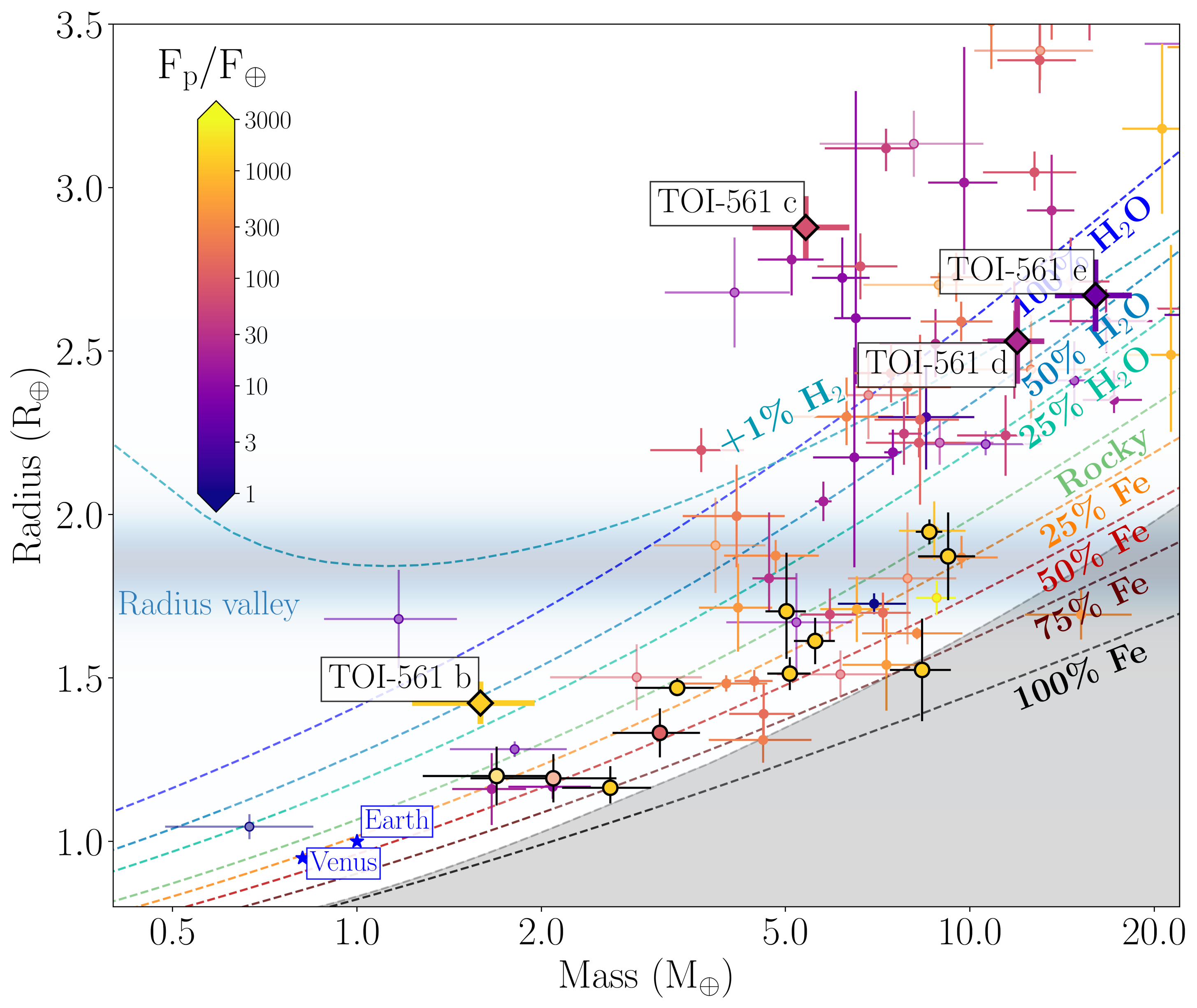An unusually low density ultra-short period super-Earth and three mini Neptunes around the old start TOI-561
Multi-planet systems offer a unique opportunity for comparative exoplanetology, having originated from the same proto-planetary disk and evolved in the same environment. This makes them appealing targets to test theoretical planetary formation and evolution scenarios. In this context, the Transiting Exoplanet Survey Satellite (TESS) is providing a significant contribution, by discovering more transiting multi-planet systems. To complement the radius information derived from the transit analysis and to infer the planetary inner bulk composition, mass measurements are required, i.e. using precise radial velocities (RVs). This new work (Lacedelli et al. 2020), presents the characterisation of the multiplanet system orbiting TOI-561.
TOI-561 is an old, iron poor, α-enhanced late G dwarf around which TESS identified three transiting candidates with periods of 0.45, 10.8, and 16.4 days. Astronomers followed up the system with the HARPS-N spectrograph, collecting 82 high precision RVs. RVs and TESS photometry were analysed in order to validate the transiting candidates, and to search for additional companions. The two inner candidates, were confirmed and characterized: an ultra-short period (USP) super-Earth (TOI-561 b, P = 0.45 d) with mass of M b = 1.59 M ⊕ and radius of R b = 1.42 R ⊕ , and a mini-Neptune (TOI-561 c, P = 10.78 d) with M c = 5.40 M ⊕ and R c = 2.88 R ⊕. TOI-561 b has a density of 3.0 g cm-3, which makes it the lowest density USP planet known to date. In addition, it was found that the dimming events initially assigned to the 16.4 d period candidate are in fact due to single transits of two additional mini-Neptunes initially revealed in the RV data, with periods of 25.6 d (planet d) and 77.2 d (planet e), with M d = 11.9 M ⊕ (R d = 2.53 R ⊕ ) and M e = 16.0 M ⊕ (R e = 2.67 R ⊕ ) respectively. N-body simulation predicts a strong, anti-correlated, long-term transit time variation signal between planets d and e, whose period ratio is close to a 3:1 mean motion resonance.
With precise mass and radius measurements, the planets around TOI 561 are optimal targets for further atmospheric, dynamical and composition studies, especially considering the dynamical interactions between the outer planets and the uncommonly low density of the USP planet. This work highlights the exquisite precision of the HARPS-N RVs and their importance in unveiling the architecture and properties of planetary systems.

Figure 1: Mass-radius diagram for known exoplanets with mass and radius measurements more precise than 30%, colour-coded according to their incidental flux in Earth units. The TOI-561 planets are labelled and represented with coloured diamonds. TOI-561 b has the lowest density among the USP planets, that are highlighted in the plot with thick black contours.
Link to the papers:
https://arxiv.org/abs/2009.02332

